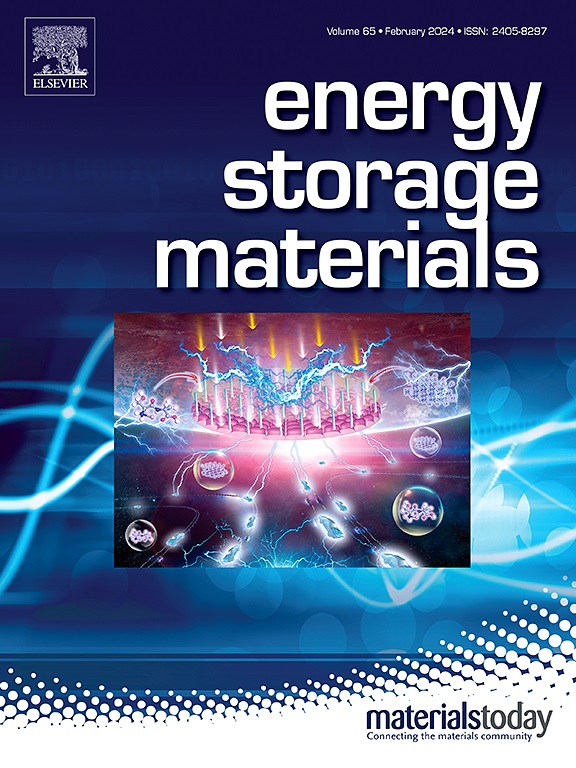Stack pressure-A critical strategy and challenge in performance optimization of solid state batteries
IF 18.9
1区 材料科学
Q1 CHEMISTRY, PHYSICAL
引用次数: 0
Abstract
Due to their excellent energy density, solid-state batteries (SSBs) are expected to play an important role in future energy storage and transportation fields. However, the practical application of SSBs still faces many challenges, including poor contact at the electrode - solid electrolyte (SE) interface, inferior interfacial stability, and low ionic conductivity of SE and electrode materials, which further affect the capacity, C-rate performance, cycle life and safety of SSBs. It has been demonstrated that appropriate stack pressure is a critical factor in improving interfacial contact quality, enhancing interfacial stability, and increasing ionic conductivity of materials in SSBs. To this end, this paper comprehensively summarizes the important role and challenges of stack pressure in the performance optimization of SSBs. First, the effects and mechanisms of stack pressure on the interfacial contact quality of SSBs are analyzed, including the anode-SE interface and the cathode-SE interface, as well as how stack pressure should be applied to improve interfacial contact quality. Then, the effects and mechanisms of stack pressure on the interfacial stability of SSBs are analyzed, including the stabilizing effect on lithium deposition/stripping and the inhibiting effect on lithium dendrites, as well as how stack pressure should be applied to enhance interfacial stability. Next, the effects of stack pressure on SE materials and electrode materials are analyzed, proposing that the ionic conductivity and cyclic stability of SSBs can be increased by pressure-affected parameters such as porosity and volume change rates of SE and electrode materials. With respect to the high demand for stack pressure in SSBs, methods and strategies that can effectively reduce the stack pressure are further discussed, including the adoption of novel interfaces, novel materials, and novel processes. The directions for future research and development are prospected at last.
求助全文
约1分钟内获得全文
求助全文
来源期刊

Energy Storage Materials
Materials Science-General Materials Science
CiteScore
33.00
自引率
5.90%
发文量
652
审稿时长
27 days
期刊介绍:
Energy Storage Materials is a global interdisciplinary journal dedicated to sharing scientific and technological advancements in materials and devices for advanced energy storage and related energy conversion, such as in metal-O2 batteries. The journal features comprehensive research articles, including full papers and short communications, as well as authoritative feature articles and reviews by leading experts in the field.
Energy Storage Materials covers a wide range of topics, including the synthesis, fabrication, structure, properties, performance, and technological applications of energy storage materials. Additionally, the journal explores strategies, policies, and developments in the field of energy storage materials and devices for sustainable energy.
Published papers are selected based on their scientific and technological significance, their ability to provide valuable new knowledge, and their relevance to the international research community.
 求助内容:
求助内容: 应助结果提醒方式:
应助结果提醒方式:


